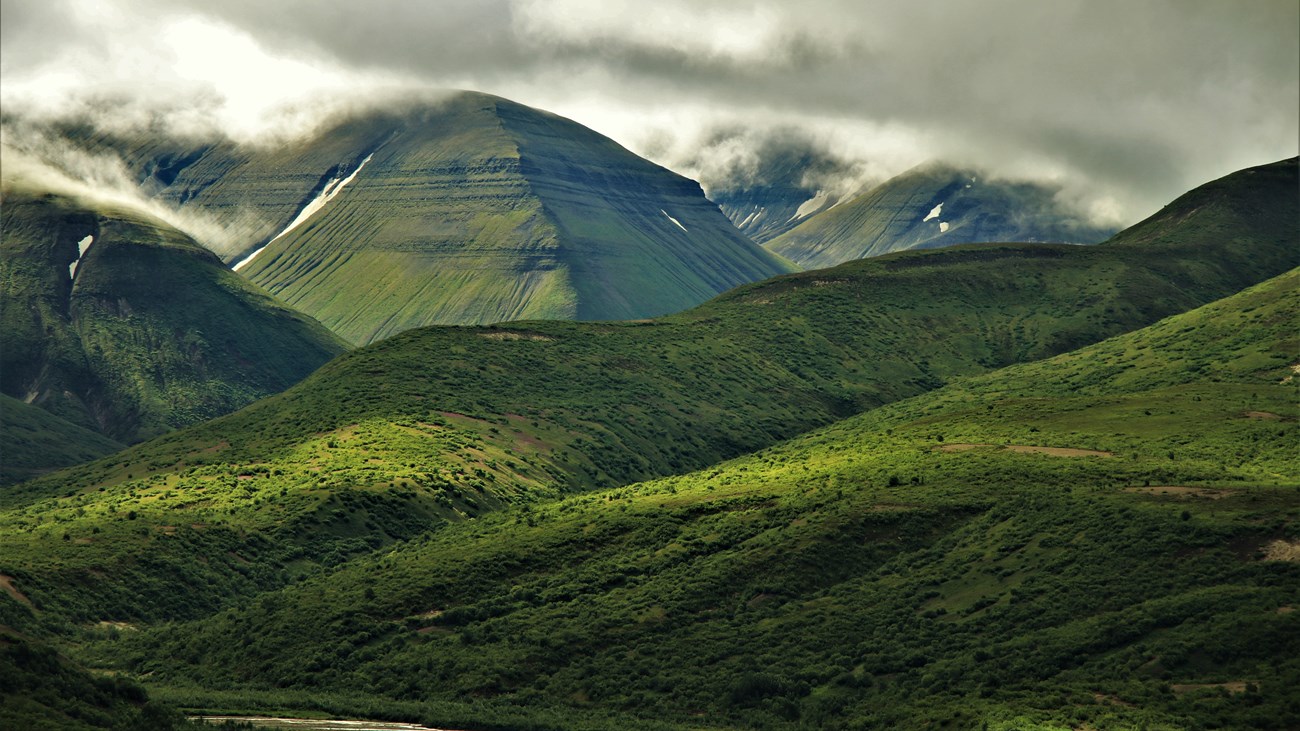
Photo courtesy of M. Whalen Katmai is home to hundreds of different types of vascular plants. These plants, along with lichen and mosses, form the foundation of the park's ecosystems and define the habitat characteristics for all of the more famous and recognizable denizens of Katmai National Park such as brown bears, wolves, eagles, lynx, caribou and more. Without the rich and diverse vegetation communities that blanket the park landscape, this area would be entirely barren of animal life. Therefore, preserving the precious botanical resources of the park is central to conserving and maintaining the entire intact ecosystem here. 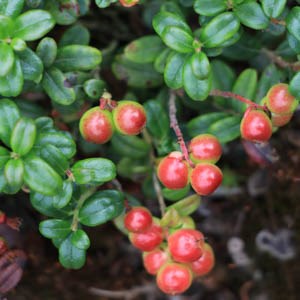
Photo courtesy of M. Whalen Lowbush CranberryVaccinium vitis-idaeaAlutiiq: Kenegtaq Yup’ik: Tumagliit Dena'ina: K'inghildi The berries are used in jam and syrup or mixed with whitefish and fat to make akutaq. The fruit is best harvested after the first frost. Akutaq is a traditional dish that is made from berries and fat. The Alutiiq “ice cream” may also include fish oil or eggs. While each family tends to have their own akutaq recipe, modern versions of the dish often include sugar, shortening, or mashed potatoes. Akutaq is often served at potlucks and celebrations. 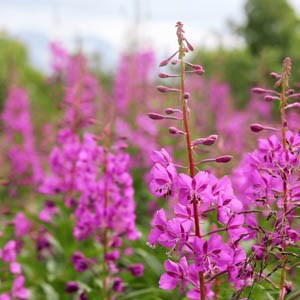
Photo courtesy of S. Gage Common FireweedEpilobium angustifoliumAlutiiq: Cillqaq Yup’ik: Ciilqaarat Dena'ina: Niłdghuligi Fireweed shoots can be used in salad, and the flowers are often brewed in teas, used to treat boils, or made into jam. 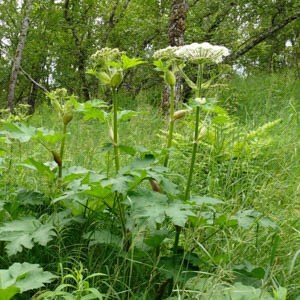
Photo courtesy of M. Whalen Cow ParsnipHeracleum lanatumAlutiiq: Ugyuuteq Yup’ik: Tarnaq Dena'ina: Ggis Regional name: Putchke The peeled stems can be eaten raw or cooked with fish. However, the leaves can cause severe skin blisters, rashes, and itching. 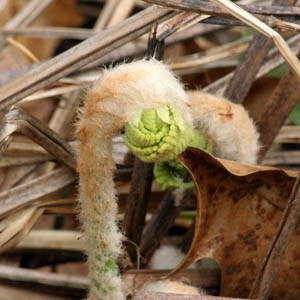
Photo courtesy of M. Whalen Fiddlehead FernsAthyrium filix-feminaAlutiiq: Qataqutaq Yup’ik: Cetuguaraq Dena'ina: Ełnen tselts'egha Prior to being unfurled, the curled heads of the fern can be roasted or boiled and eaten. Various species, like the Lady Fern, are commonly found in moist and shady woods and streambanks. They are also rich in vitamins.
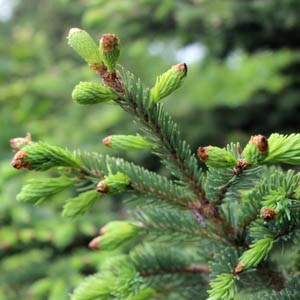
Photo courtesy of S. Gage White SprucePicea glaucaAlutiiq: Arhmasut Dena'ina: Ch'vach'etl'a Spruce tips are new growth of the spruce tree. The light green tips may be eaten directly off the tree, pickled, baked, or boiled in tea for medical infusions. 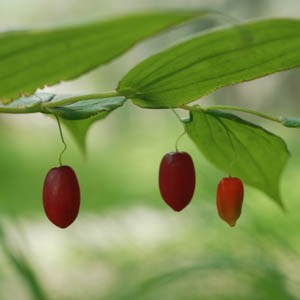
NPS Photo/B. Plog Watermelon BerriesStreptopus amplexifoliusAlutiiq: Muuguaq Yup’ik: Atsarrluk Dena'ina: Hcheq'a gek'a The red-colored watermelon berries are watery and have an oblong shape. The berries are generally eaten in passing, rather than being harvested in large quantities. 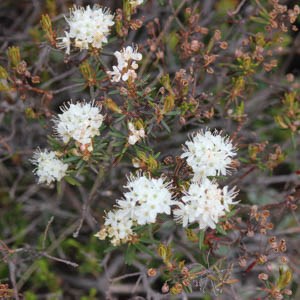
Photo courtesy of S. Gage Labrador TeaLedum palustrisAlutiiq: Atsaqutarpak, Nunallaq caayuq Yup’ik: Ayuq Dena'ina: Quchukda While labrador tea can be toxic in large quantities, it may be boiled in tea, used in salves, and used for preventative medicine or burned for medical and spiritual purification. Take care not to confuse this with bog rosemary, Andromeda polifolia, which is poisonous and often grows intermingled with Labrador Tea. 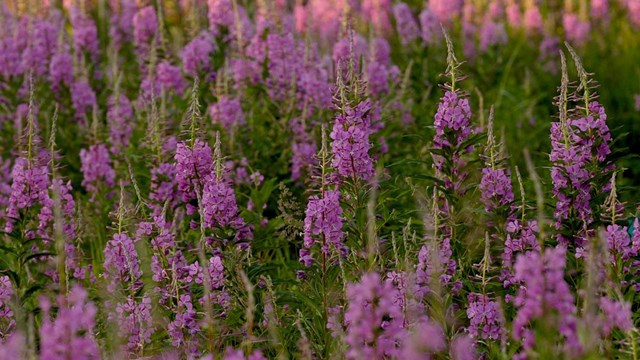
Wildflowers
What flowers might you find in Katmai? 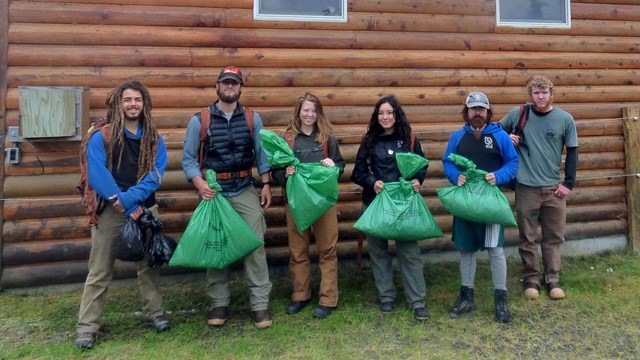
Invasive Species
What plants are non-native to Katmai? |
Last updated: March 17, 2022
